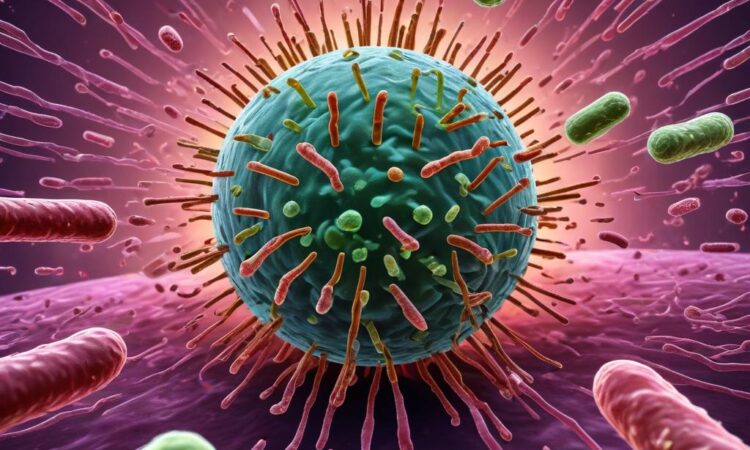The Growing Threat of Antimicrobial Resistance
The increasing prevalence of antibiotic-resistant bacteria poses a significant threat to global health, highlighting the urgent need for new antimicrobial treatments and strategies to prevent resistance. This phenomenon, known as antimicrobial resistance (AMR), renders antibiotics and other antimicrobial drugs ineffective, leading to prolonged illnesses, increased healthcare costs, and a higher risk of death. The consequences of unchecked AMR are dire, potentially reversing decades of progress in public health and jeopardizing the effective treatment of common infections.
The Mechanisms of Antimicrobial Resistance
Antimicrobial resistance develops through various mechanisms. Bacteria can evolve to resist the effects of antibiotics through genetic mutations, allowing them to survive and multiply even in the presence of the drug. These mutations can occur spontaneously or be acquired through horizontal gene transfer, where resistant genes are passed between bacteria. This transfer can occur between different species, accelerating the spread of resistance. Some common mechanisms include:
- Enzyme production: Bacteria produce enzymes that inactivate the antibiotic.
- Target modification: Bacteria alter the structure of the antibiotic’s target site, rendering the drug ineffective.
- Efflux pumps: Bacteria develop pumps that expel the antibiotic from the cell.
- Reduced permeability: Bacteria reduce the permeability of their cell walls, preventing the antibiotic from entering.
The overuse and misuse of antibiotics are major drivers of AMR. When antibiotics are used unnecessarily, such as for viral infections where they have no effect, or when patients fail to complete their prescribed course of treatment, resistant bacteria are more likely to emerge and proliferate. This selection pressure allows resistant strains to outcompete susceptible strains, leading to the dominance of resistant bacteria in the population.
The Global Impact of Antimicrobial Resistance
The impact of AMR is felt globally, affecting both developed and developing countries. In developing countries, inadequate sanitation, limited access to healthcare, and the prevalence of infectious diseases contribute to a higher burden of AMR. In developed countries, while access to healthcare is better, the overuse of antibiotics in agriculture and healthcare contributes to the problem. The consequences include:
- Increased mortality rates: Infections that were once easily treatable become life-threatening.
- Longer hospital stays: Treatment of resistant infections requires more time and resources.
- Higher healthcare costs: Treating resistant infections is significantly more expensive.
- Increased morbidity: Resistant infections can lead to long-term health complications.
- Threat to surgical procedures: The risk of post-operative infections increases significantly with AMR.
The economic burden of AMR is substantial. Increased healthcare costs, lost productivity due to illness, and the need for new treatments all contribute to a significant financial impact on individuals, healthcare systems, and national economies. The World Health Organization (WHO) estimates that millions of deaths could be attributed to AMR annually by 2050 if current trends continue.
Combating Antimicrobial Resistance: Strategies and Solutions
Combating AMR requires a multi-pronged approach involving global collaboration, policy changes, and individual responsibility. Key strategies include:
- Reducing antibiotic use: Implementing stricter guidelines for antibiotic prescribing and promoting responsible use in both human and animal health.
- Developing new antibiotics and antimicrobial therapies: Investing in research and development to discover and develop new drugs to combat resistant bacteria.
- Improving infection prevention and control: Implementing effective hygiene practices, vaccination programs, and infection control measures to prevent infections and reduce the need for antibiotics.
- Strengthening surveillance systems: Monitoring the prevalence of AMR and tracking the spread of resistant bacteria.
- Promoting responsible use of antibiotics in agriculture: Reducing the use of antibiotics in livestock farming to minimize the selection pressure for resistant bacteria.
- Developing alternative therapies: Exploring alternative approaches to treating infections, such as bacteriophages, antimicrobial peptides, and immunotherapy.
- Improving diagnostics: Developing rapid diagnostic tests to identify infections accurately and guide appropriate treatment decisions, reducing unnecessary antibiotic use.
- Public awareness campaigns: Educating the public about the importance of antibiotic stewardship and the threat of AMR.
The fight against AMR is a global challenge that requires a concerted effort from governments, healthcare professionals, researchers, and individuals. By implementing comprehensive strategies and promoting responsible antibiotic use, we can mitigate the threat of AMR and protect global health.
The development of new antibiotics and alternative therapies is crucial to combating AMR. This requires significant investment in research and development, focusing on innovative approaches that circumvent the mechanisms of resistance. Furthermore, strengthening surveillance systems and data sharing will allow for better tracking of resistance patterns and inform targeted interventions.
Ultimately, tackling AMR requires a change in mindset, shifting from a culture of easy antibiotic access to one of responsible and judicious use. This involves educating healthcare professionals, farmers, and the public about the importance of antibiotic stewardship and the long-term consequences of overuse. Only through a collective effort can we hope to mitigate the growing threat of antimicrobial resistance and preserve the effectiveness of these life-saving drugs.
The continued spread of antimicrobial resistance poses a significant challenge to global health security. Without concerted action, the implications for healthcare systems and global populations are deeply concerning. Addressing this critical issue demands a collaborative approach, combining scientific innovation, policy changes, and a shift towards more responsible antibiotic use.
Further research is needed to fully understand the complex mechanisms of AMR and to identify new targets for antimicrobial drugs. This includes investigating the role of the environment in the spread of resistance, as well as exploring innovative approaches to drug delivery and combination therapies. The development of rapid diagnostic tests that can accurately identify resistant bacteria will also play a vital role in guiding treatment decisions and reducing the unnecessary use of antibiotics.
In conclusion, the threat of antimicrobial resistance is real and urgent. It demands immediate and sustained action on a global scale. By working together, we can protect the effectiveness of these life-saving drugs and safeguard global health for future generations. A continued commitment to research, improved infection control, responsible antibiotic use, and effective public health interventions is essential to mitigate the growing threat of AMR and ensure that antibiotics remain a valuable tool in combating infectious diseases.

